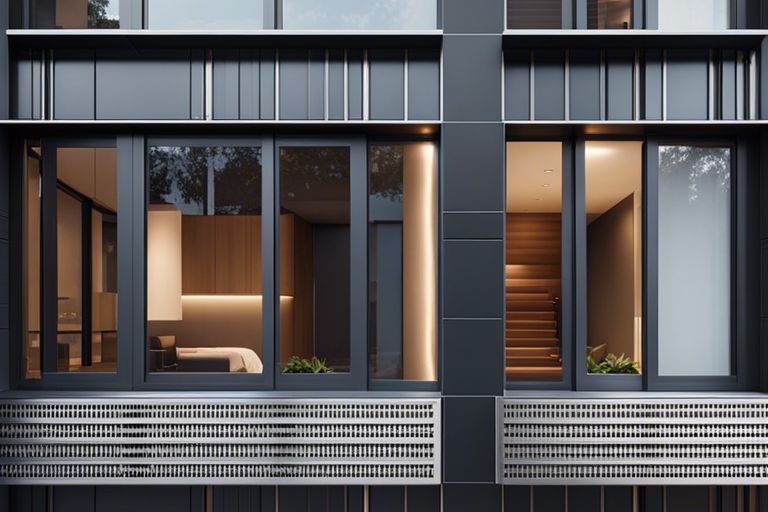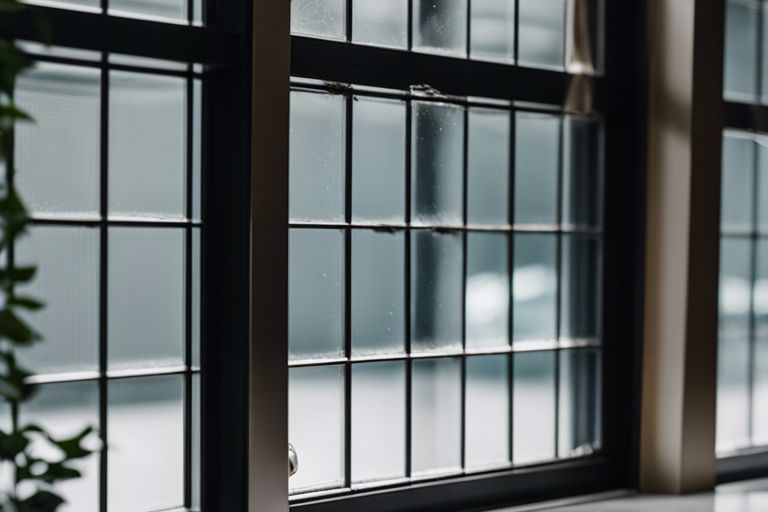Congratulations on taking the first step towards creating an energy-efficient home with aluminium windows and doors. Understanding the energy efficiency rating for these components is crucial to making informed decisions for your home. By learning about the U-factor, Solar Heat Gain Coefficient (SHGC), Visible Transmittance (VT), and Air Leakage, you can ensure that your windows and doors contribute to a more comfortable and sustainable living environment. To delve deeper into energy performance ratings for windows and doors, check out this comprehensive guide from the Energy Performance Ratings for Windows, Doors, and …
Key Takeaways:
- Energy Efficiency Rating: Understanding the energy efficiency rating for aluminium windows and doors is crucial for making informed decisions on your investment.
- U-Value: The U-value measures the rate of heat transfer through a material. Lower U-values indicate better insulation, which leads to higher energy efficiency.
- Solar Heat Gain Coefficient: The SHGC measures the amount of solar heat that enters a building through a window or door. Lower SHGC values indicate better thermal insulation.
- Visible Transmittance: This rating measures the amount of visible light that passes through a window or door. Higher values indicate more natural light, which can reduce the need for artificial lighting.
- Air Leakage: Understanding the air leakage rating can help you choose windows and doors that minimize drafts and heat loss, resulting in improved energy efficiency.
- Material and Design: The material and design of aluminium windows and doors play a crucial role in their energy efficiency. Look for products with thermal breaks and low-e coatings for optimal performance.
- Professional Installation: Proper installation by a qualified professional is essential for maximizing the energy efficiency of aluminium windows and doors.
Types of Energy Efficiency Ratings
One of the most important factors to consider when evaluating the energy efficiency of aluminium windows and doors is the type of energy efficiency ratings they carry. These ratings provide valuable information about the performance of the product in terms of energy conservation and heat transfer. Here are the main types of energy efficiency ratings you need to be familiar with:
| 1. U-Value | 5. Solar Heat Gain Coefficient (SHGC) |
| 2. R-Value | 6. ENERGY STAR Rating |
| 3. Visible Transmittance (VT) | 7. National Fenestration Rating Council (NFRC) Label |
| 4. Air Leakage (AL) Rating | 8. American Architectural Manufacturers Association (AAMA) Certification |
After understanding the significance of these energy efficiency ratings, you can make more informed decisions when choosing aluminium windows and doors for your space.
Understanding U-Values
The U-Value of a window or door measures the rate of heat loss. A lower U-Value indicates better insulation and reduced heat transfer, making your home more energy-efficient. When evaluating aluminium windows and doors, look for those with the lowest U-Values to ensure optimal energy performance.
R-Values Explained
R-Value measures the ability of a material to resist heat flow. Higher R-Values indicate better insulation properties, helping to reduce heating and cooling costs. When selecting aluminium windows and doors, prioritize those with higher R-Values to maximize energy savings in your home.
Solar Heat Gain Coefficient (SHGC)
The Solar Heat Gain Coefficient (SHGC) measures the amount of solar radiation that enters a building through the window or door. A lower SHGC indicates less heat gain, reducing the need for air conditioning and saving energy. When considering aluminium windows and doors, a lower SHGC is favorable for maintaining a comfortable indoor temperature and minimizing energy usage.
Factors Influencing Energy Efficiency
Unlike traditional windows and doors, aluminium windows and doors have several factors that influence their energy efficiency rating. These factors include:
- Material and construction of aluminium frames
- Quality of glazing and insulation
- Importance of installation and maintenance
The energy efficiency of your aluminium windows and doors depends on how these factors are addressed and taken into consideration.
Material and Construction of Aluminium Frames
When it comes to the energy efficiency of your aluminium windows and doors, the material and construction of the aluminium frames play a crucial role. The quality of the aluminium used and how the frames are constructed can impact the insulation and thermal performance of your windows and doors. It’s important to look for frames that are well-constructed and made of high-quality aluminium to ensure that they contribute to the overall energy efficiency of your home.
Quality of Glazing and Insulation
The quality of glazing and insulation in your aluminium windows and doors is another crucial factor that influences their energy efficiency. High-quality glazing and insulation help in reducing heat loss and improving the overall thermal performance of your windows and doors. Ensuring that your windows and doors are equipped with top-notch glazing and insulation is essential in maximizing their energy efficiency.
Importance of Installation and Maintenance
Aside from the materials used, the installation and maintenance of your aluminium windows and doors are vital in determining their energy efficiency. Proper installation ensures that windows and doors are airtight and free from any gaps that can result in heat loss. Additionally, regular maintenance such as cleaning and checking for any damages can help in preserving the energy efficiency of your windows and doors over time.
Step-by-step Guide to Choosing Energy-Efficient Aluminium Windows and Doors
For choosing energy-efficient aluminium windows and doors, it’s important to carefully assess your needs, compare different products, and interpret energy rating labels. Here’s a step-by-step guide to help you make an informed decision.
Assessing Your Needs
When it comes to assessing your needs for energy-efficient aluminium windows and doors, consider factors such as the climate in your area, the orientation of your home, and your budget. You should also take into account the size and placement of windows and doors in your home, as well as your aesthetic preferences. By understanding your specific requirements, you can make a more informed decision when selecting energy-efficient aluminium windows and doors.
Comparing Different Products
When comparing different products, consider factors such as the thermal performance, air infiltration, and solar heat gain coefficient. Look for products that are certified by reputable organizations and offer a good balance between energy efficiency and durability. It’s also important to consider the overall design and construction of the windows and doors to ensure they meet your aesthetic and performance expectations.
Interpreting Energy Rating Labels
Interpreting energy rating labels is crucial in determining the energy efficiency of aluminium windows and doors. Look for products that have high Energy Star ratings and are endorsed by reputable industry organizations. Pay attention to details such as U-factor, solar heat gain coefficient, and visible transmittance to ensure you’re getting the most energy-efficient options for your home.
Understanding the Energy Efficiency Rating for Aluminium Windows and Doors
The energy efficiency rating of aluminium windows and doors plays a crucial role in helping you make informed decisions about your home. In this blog post, we will delve into the pros and cons of aluminium windows and doors, as well as the advantages and potential drawbacks of using aluminium in energy efficiency.
Pros and Cons of Aluminium Windows and Doors
Not all windows and doors are created equal. When deciding whether aluminium windows and doors are the right choice for your home, it’s important to consider the various advantages and potential drawbacks associated with them. Take a look at the table below to weigh the pros and cons before making your decision.
| Pros | Cons |
| Durable and long-lasting | Low thermal resistance |
| Sleek and modern design | Potential for condensation |
| Low maintenance | Possibility of corrosion |
| Recyclable and sustainable | Higher cost compared to other materials |
| Excellent strength and stability | Limited color options |
| Good for large openings | Less energy efficiency compared to other materials |
Advantages of Aluminium in Energy Efficiency
When it comes to energy efficiency, aluminium windows and doors offer several advantages. The material provides a strong and stable frame, allowing for the use of larger window panes without compromising structural integrity. Additionally, aluminium is recyclable and sustainable, making it an environmentally friendly choice for your home.
Potential Drawbacks to Consider
Despite their numerous benefits, there are some potential drawbacks to consider when opting for aluminium windows and doors. The low thermal resistance of aluminium frames means that they may not provide the same level of insulation as other materials, potentially leading to higher energy costs. Additionally, the possibility of condensation and corrosion should be taken into account when making your decision.
In conclusion, weighing the pros and cons of aluminium windows and doors is essential in determining whether they are the right fit for your home. It’s important to consider the material’s energy efficiency, as well as its durability and design, before making a decision. Remember, the choice you make will have a direct impact on your home’s comfort and energy usage.Understanding the Energy Efficiency Rating for Aluminium Windows and Doors
In your quest for energy-efficient windows and doors, it’s essential to understand the energy efficiency rating system. Aluminium windows and doors can play a significant role in promoting energy efficiency, but it’s crucial to grasp the rating system to make informed decisions. This blog post will guide you through essential tips for maximizing energy efficiency, upgrading existing windows and doors, and incorporating energy-saving accessories.
Tips for Maximizing Energy Efficiency
After investing in aluminium windows and doors, you can take specific measures to maximize their energy efficiency. Here are some top tips to help you get the most out of your investment:
- Ensure proper installation to eliminate air leakage
- Consider double or triple glazing for enhanced insulation
- Opt for thermal breaks to prevent heat transfer
- Choose low-emissivity glass to reduce heat transfer
Perceiving the significance of these tips can make a noticeable difference in the energy efficiency of your aluminium windows and doors. For more detailed guidance, you can refer to A free guide to energy-efficient Aluminium windows.
Upgrading Existing Windows and Doors
If you already have aluminium windows and doors in place, there are still options for improving their energy efficiency. Upgrading your existing fixtures by sealing air leaks, adding weather-stripping, or installing storm windows can make a substantial difference. Consider consulting a professional to assess your specific needs and recommend the most effective upgrades.
Incorporating Energy-Saving Accessories
To further enhance the energy efficiency of your aluminum windows and doors, you can incorporate various accessories. Adding features such as window films, awnings, or exterior shades can provide additional insulation and UV protection, contributing to a more energy-efficient environment. It’s important to choose accessories that complement the design and function of your aluminium windows and doors, ensuring a harmonious blend of aesthetics and efficiency.

Conclusion
Following this guide, you now have a better understanding of the energy efficiency rating for aluminium windows and doors. It is important to consider the U-value, solar heat gain coefficient, and air leakage rating when selecting windows and doors for your home or building. By choosing products with higher energy efficiency ratings, you can reduce your energy consumption, lower your utility bills, and minimize your environmental impact. Remember to look for products that are certified by reputable organizations such as ENERGY STAR to ensure that you are making a sustainable and cost-effective choice for your property. With this knowledge, you can make informed decisions when it comes to improving the energy efficiency of your home or building.
FAQ
Q: What is the energy efficiency rating for aluminium windows and doors?
A: The energy efficiency rating for aluminium windows and doors measures how effectively they insulate against heat loss or gain. It is typically expressed as a U-value, with lower U-values indicating better insulation.
Q: How is the energy efficiency of aluminium windows and doors determined?
A: The energy efficiency of aluminium windows and doors is determined through rigorous testing in accordance with industry standards. Factors such as the type of glass, frame design, and insulation are taken into consideration.
Q: What are the benefits of choosing energy-efficient aluminium windows and doors?
A: Energy-efficient aluminium windows and doors can help reduce heating and cooling costs, improve indoor comfort, and contribute to a more sustainable and environmentally friendly building design.
Q: How can I identify energy-efficient aluminium windows and doors?
A: Look for products with a low U-value, high-quality insulation materials, and certifications from reputable energy efficiency rating organizations.
Q: Are there regulations or standards for energy efficiency ratings of aluminium windows and doors?
A: Yes, there are industry regulations and standards that govern the energy efficiency ratings of aluminium windows and doors. It’s important to ensure that any products you choose comply with these regulations.
Q: Can energy-efficient aluminium windows and doors help with noise reduction?
A: Yes, the same properties that make aluminium windows and doors energy-efficient also contribute to reducing noise transmission, providing a quieter and more peaceful indoor environment.
Q: Are there any financial incentives for choosing energy-efficient aluminium windows and doors?
A: Some regions offer financial incentives, tax credits, or rebates for installing energy-efficient windows and doors as part of energy-saving initiatives. It’s worth checking with local authorities or energy efficiency programs for potential benefits.






